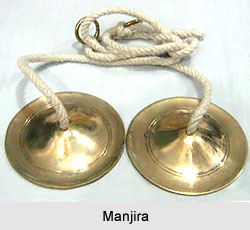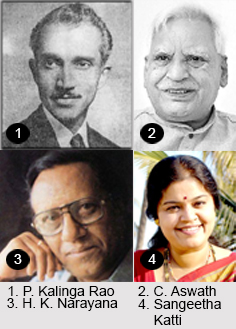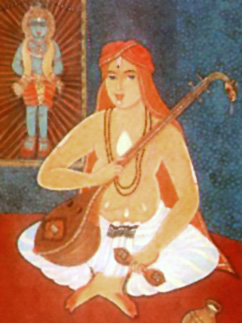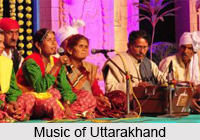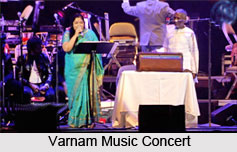 Varnam is a kind of composed music with which a typical concert in South India begins.
Varnam is a kind of composed music with which a typical concert in South India begins.
It is called a tana varnam in a music concert and a pada varnam in a dance concert. A varnam is similar to an etude, which in Carnatic terms is called the abhyasa gana category of composition. Most varna are in the same raaga throughout, and are also metered throughout, but a few have a different raga in each section. The latter are called ragamalika tana (or pada) varna: tana or pada varna in a garland (malika) of ragas. The ragamalika idea is particularly South Indian and is utilized in various other genres as well as being a genre itself.
Varna is learned by students who are just about to move from the practice genres to learning concert music. They are good for training the voice and also for developing instrumental technique, partially because they are practiced at three different levels of speed. A varnam is also considered an authoritative source for the correct rendering of a raaga. In concert, it is good for warming up, although it is entertaining in its own right. The varnam is structured somewhat like other types of South Indian genres.
Structure of Varnam
A varnam has three basic sections: pallavi, anupallavi, and charanam. Other elements occur between these-sections, or after a section. The sections of the composition are defined in terms of pitch register. Theoretically, a pallavi section delineates the lower tetrachord of the middle register and includes a few pitches in the low register. An anupallavi section consists, theoretically, of the upper tetrachord of the middle register and a few pitches of the upper register. Most varna are in the middle speed (madhyamakala).
Text of Varnam
The Varna texts typically deal with love or devotion to a deity. They may even be in praise of a patron or describe the varna itself. A varnam includes several ettugada svara passages, which are based on the structural principle of ever increasing complexity and length. One of the most common patterns of development in Carnatic music is the srotovaha yati. It is said to be like a river, (srotovaha) - starting small and becoming larger.
Performance of Varnam
In performance, the varnam is lengthened by repetition. The repetition can be done smoothly because of the melodic "rhyme" at the end of each segment. Each avarta of the first half is repeated, but at double speed. Therefore, it must be performed twice to fill the time cycle. In the second half, the charanam appears after each ettugada svara. In most Carnatic genres, the pallavi would occur after each section. The varnam is unusual in that the pallavi does not appear in the second half at all.
